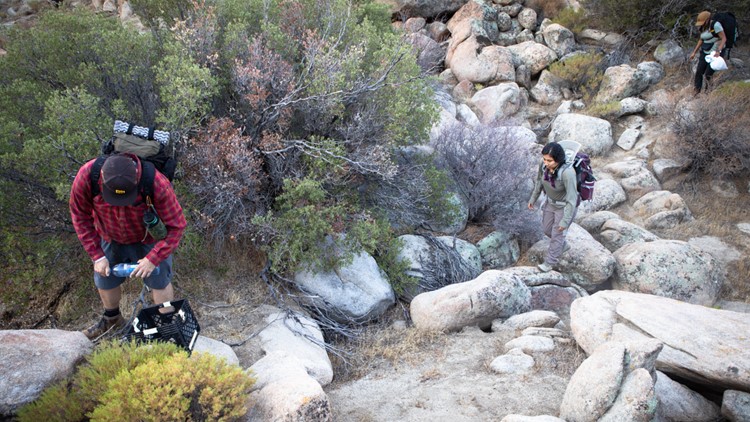IMPERIAL COUNTY, Calif. — “Desconocido/a.”
The engraving on a heart-shaped plaque posted on a yellow wooden cross stands out in the landscape of rocky hills and shrubs. There’s half a dozen of them across California's borderlands.
James Cordero, who leads a group of volunteers to stock water, food and other supplies along migrant corridors, plants the crosses to mark where someone has died in the vast desert expanse.
“The people will be unknown or forgotten, but we can honor them.”
Every year, the remains of migrants who succumbed to the environment in their attempt to enter the U.S. are recovered from California’s border strip. Border Patrol agents or aid workers stumble upon the bodies, sometimes days or weeks after the death.
Those deaths have long been a fact of life in the region, but recent data show Imperial County’s desert has become increasingly deadly in recent years.
Since 2018, at least 50 migrants have died in Imperial County while attempting to cross the border, according to Border Patrol data. More migrants died from 2018 to 2020 –– the latest available data from the agency –– than in the previous six years combined.
But those numbers don’t tell the whole story, according to immigration advocates and researchers. Incomplete reporting by Border Patrol and a high number of people reported missing but never found mean the death toll could be much larger.
Federal immigration enforcement has long driven migrants into risky terrain along the Southwest border through a policy known as “prevention through deterrence.” The idea is to discourage illegal entry into the U.S. by increasing enforcement in more urban areas, leaving remote and dangerous border regions as the only remaining crossing corridors.
But opponents say the policy hasn’t stopped people from crossing –– it’s only made it more deadly.
To read the full story from inewsource, click here.
inewsource is a nonprofit, independently funded newsroom that produces impactful investigative and accountability journalism in San Diego County. Learn more at inewsource.org.



